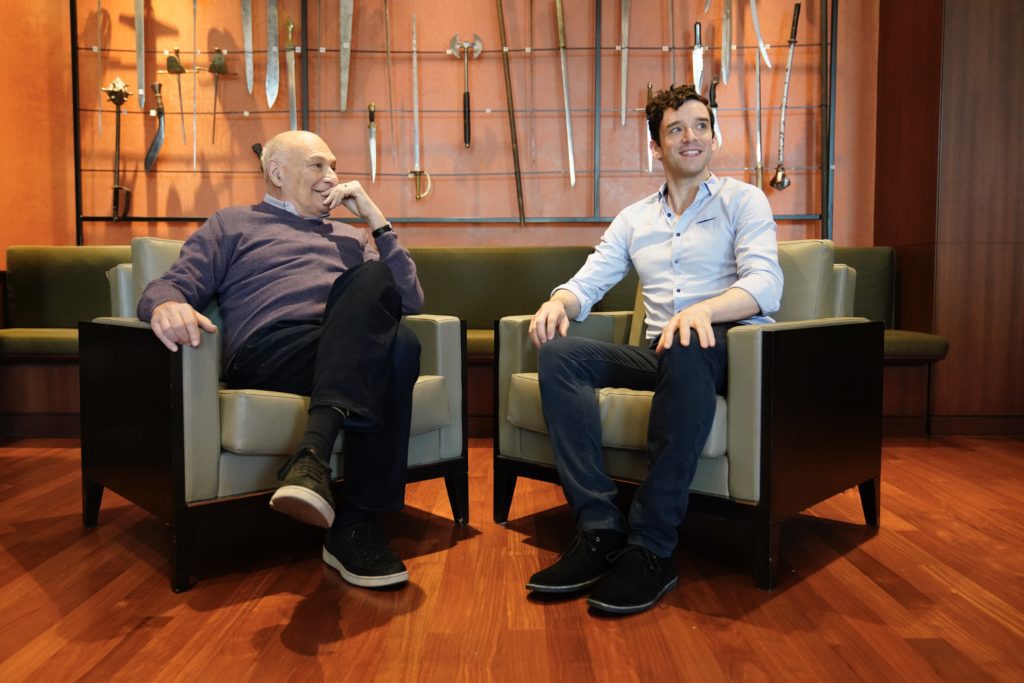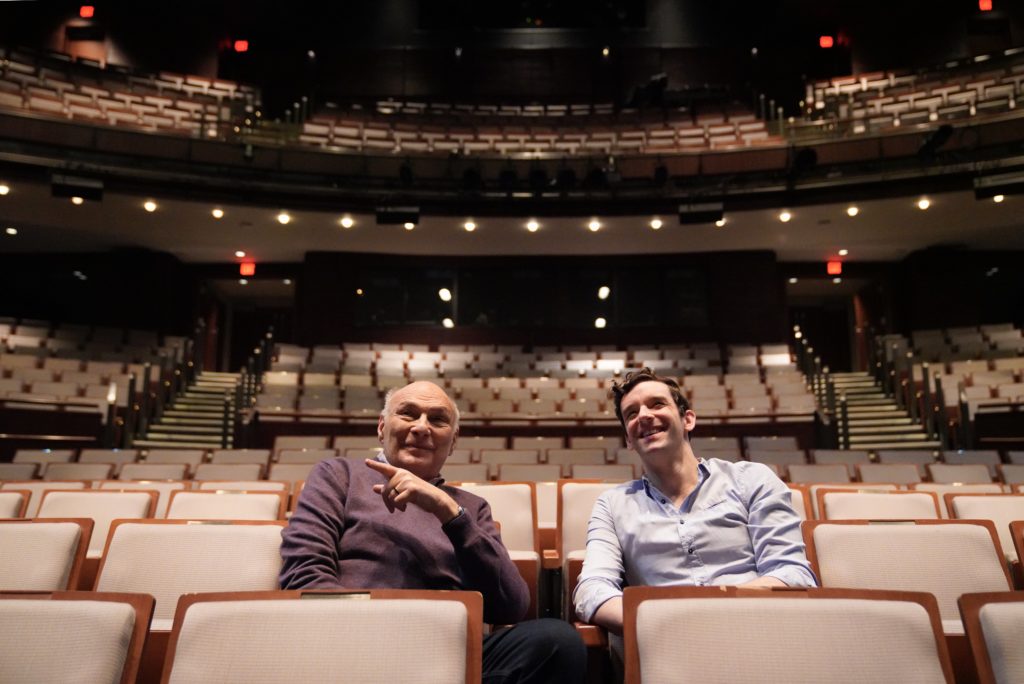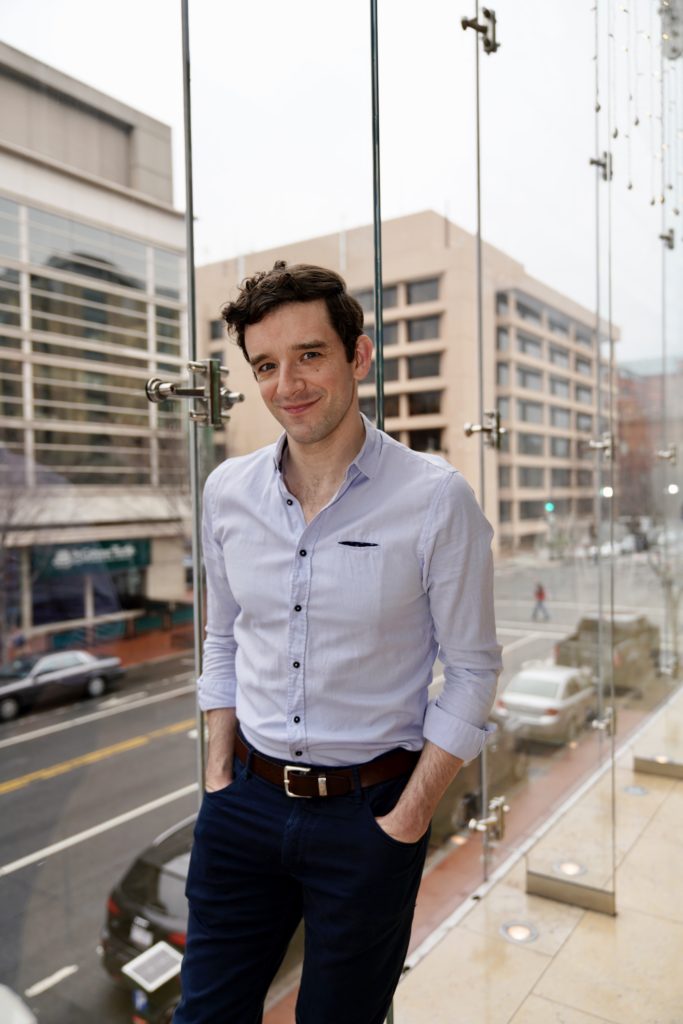Michael Urie: Michael Kahn’s Last Prince?
By • February 21, 2018 0 743

Over the phone, Michael Urie sounds young, an enthusiast in his 20s perhaps. There is something both excited and exciting in his voice. In photographs, he looks about that age, eyes ready for contact or action.
He looks a little like a schoolboy, which, in a way, the actor is playing — albeit a very unsettled and unsettling schoolboy, who has seen his happy school days come to an end. When the young prince of Denmark comes home to Elsinore, everything has changed.
His much-beloved father is dead.
His mother is set to marry his uncle, who will then become king.
And he has seen a ghost, the most storied ghost in all of theatrical literature: the ghost of his father, telling him with haunting visage that he was murdered by his brother Claudius, Hamlet’s uncle, and that Hamlet must be ready for revenge.
This is the task for Prince Hamlet, no small thing, no small task, one we all know about. It is also the task for Urie, a gifted actor who is taking on probably the most challenging part in stage history.
Urie — known to the TV-watching public for his role in the “Ugly Betty” series a few seasons back — understands the challenge, and loves it, for several reasons.
He laughs when you tell him how youthful he sounds over the phone. “I’m 37, not quite so young. But I understand. Hamlet is a prince, he’s still at college and so forth, so most of the time he’s considered to be heroic, young. Until the catastrophe.”
The death and murder of his father, the betrayal of his mother, the villainy of his uncle changes everything.
Hamlet came home for a funeral. Now it’s a wedding, which is an abrupt change of tone, also for the play. For everything out in the open, there is now an underlying aspect.
Urie is heading a remarkable cast directed by the Shakespeare Theatre Company’s legendary, endlessly-full-of-fresh-ideas Artistic Director Michael Kahn, who founded the company in 1986 when it was still at the Folger Shakespeare Library on Capitol Hill.

Photo by Ricardo Jimenez.
“One of the things, the main appeal, is being able to work with Michael [Kahn],” Urie said. “I was never directly in a play which he directed, but he was one of my teachers at Juilliard.”
The large cast includes Shakespeare Theatre Company veteran Keith Baxter playing the ghost; Robert Joy, who was just here to play the title role in “Charles III,” this time playing Polonius, Ophelia’s advice-giving dad; Madeleine Potter as Hamlet’s mother, Queen Gertrude; Alex Cox as his murderous uncle and stepfather Claudius; and Oyin Oladejo, seen in “Star Trek: Discovery,” as Ophelia (of get-thee-to-a-nunnery fame).
“It’s quite a great gathering, right,” agreed Urie, who recently starred in “Torch Song Trilogy” off-Broadway. “Confronting ‘Hamlet,’ and therefore confronting Shakespeare, is just a great experience, because you’ve forgotten what he can do, how witty, how funny he is, how potent the lines are, how beautiful the poetry. And how complicated, deep and human the characters are.
“People, I think, get put off by the size, the reputation, the play, the language. And that’s not what we wanted,” he continued. “Michael wanted this to be accessible to everybody, not just people who might be overly familiar with ‘Hamlet,’ who’ve memorized the lines and think they know how things should go and be played.”
For that reason (and because this is almost certainly Kahn’s last “Hamlet”), we have a modern take — doormen at the castle, cell phones and ringtones, very fashionable costumes — but also the dark, cold, overbearing and forbidding atmosphere of the spy and police state that the uncle has installed.
It should ring true for modern audiences, not as a gimmick or tricked up, but as an echo of how we live today and how our world looks. Hamlet is required to operate on different levels — as the normal, troubled young man and as the mad Hamlet, which allows him to spy on his family.
“This production has a richness, a clarity to it all,” said Urie. “Even Hamlet, who seems confused, but reaches in the end a kind of great pity and understanding of what it is to be human in his plight.”

Photo by Ricardo Jimenez.

